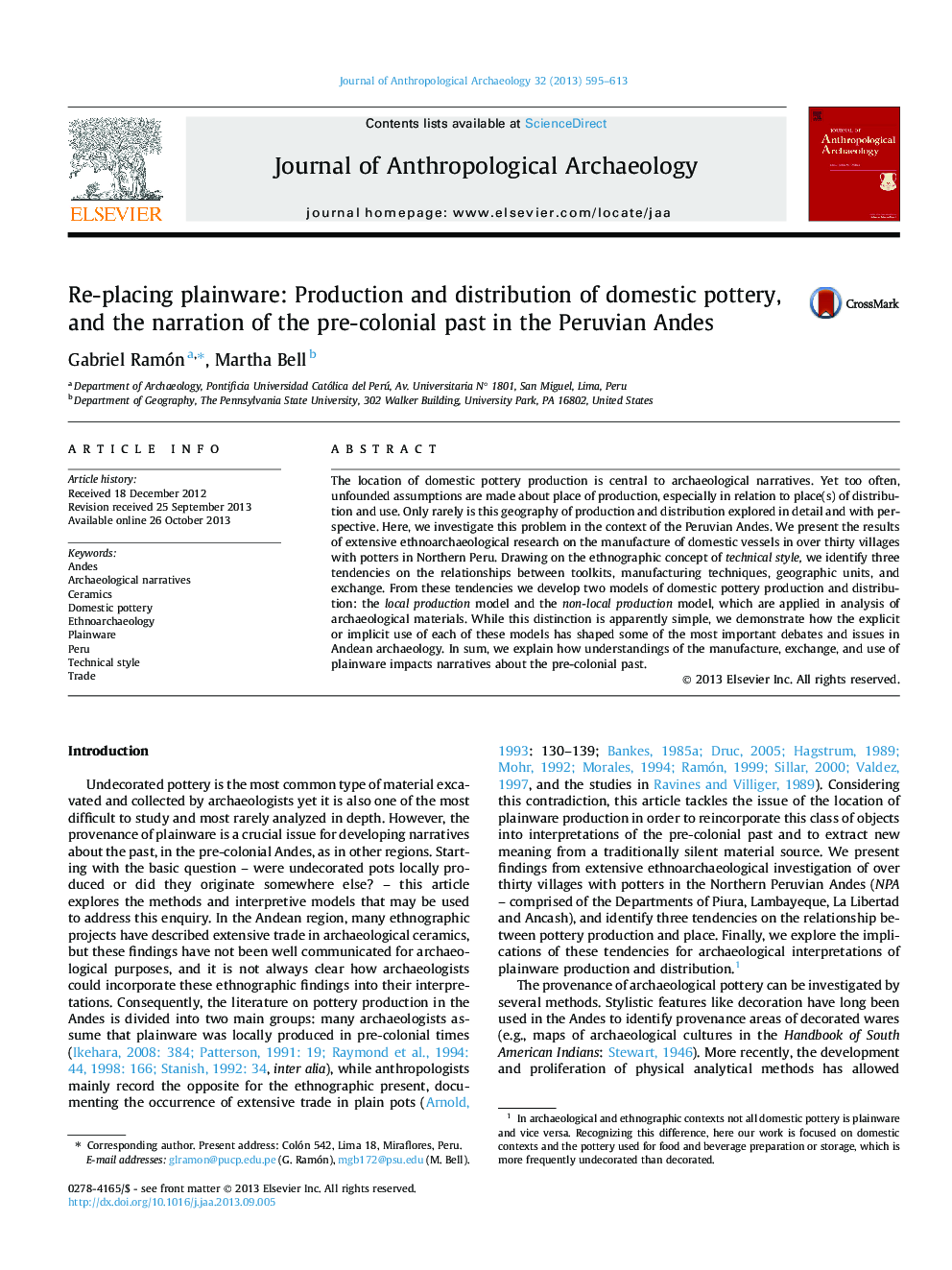| Article ID | Journal | Published Year | Pages | File Type |
|---|---|---|---|---|
| 10498715 | Journal of Anthropological Archaeology | 2013 | 19 Pages |
Abstract
The location of domestic pottery production is central to archaeological narratives. Yet too often, unfounded assumptions are made about place of production, especially in relation to place(s) of distribution and use. Only rarely is this geography of production and distribution explored in detail and with perspective. Here, we investigate this problem in the context of the Peruvian Andes. We present the results of extensive ethnoarchaeological research on the manufacture of domestic vessels in over thirty villages with potters in Northern Peru. Drawing on the ethnographic concept of technical style, we identify three tendencies on the relationships between toolkits, manufacturing techniques, geographic units, and exchange. From these tendencies we develop two models of domestic pottery production and distribution: the local production model and the non-local production model, which are applied in analysis of archaeological materials. While this distinction is apparently simple, we demonstrate how the explicit or implicit use of each of these models has shaped some of the most important debates and issues in Andean archaeology. In sum, we explain how understandings of the manufacture, exchange, and use of plainware impacts narratives about the pre-colonial past.
Related Topics
Social Sciences and Humanities
Arts and Humanities
History
Authors
Gabriel Ramón, Martha Bell,
